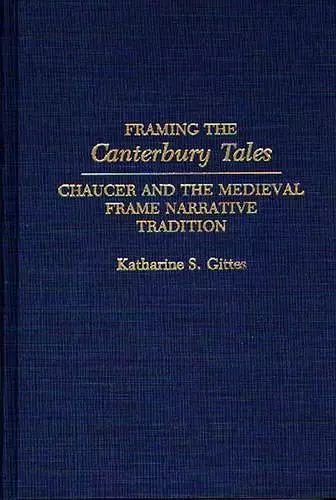Framing the Canterbury Tales
Chaucer and the Medieval Frame Narrative Tradition
Katharine S Gittes Sandstrom author
Format:Hardback
Publisher:Bloomsbury Publishing PLC
Published:30th Jul '91
Currently unavailable, and unfortunately no date known when it will be back

Gittes finds a blending of two frame narrative traditions in the Canterbury Tales, one originating in India and the Near East, and the other in ancient Greece.
This study finds a blending of two frame narrative traditions in the "Canterbury Tales", one that originated in India and the Near-East and the other in ancient Greece. It compares Chaucer's work to a number of pre-Chaucerian frame narratives that influenced his form, as well as contemporary works.A clear emphasis on literary antecedents of the Canterbury Tales differentiates this book from most criticism of Chaucer's work. Katharine S. Gittes finds a blending of two frame narrative traditions in the Canterbury Tales, one that originated in India and the Near East and the other in ancient Greece. To illustrate this dual literary tradition, Gittes compares Chaucer's work to a selection of pre-Chaucerian frame narratives that influenced his form directly or indirectly, and other narratives contemporary with Chaucer, that, in their likenesses or differences, illuminate the methodology of the Canterbury Tales. Covering materials written in eight different languages, Framing the Canterbury Tales includes discussion of the Indian-Arabic Panchatantra, Boccaccio's Decameron, Gower's Confessio Amantis, and both Eastern and Western versions of the Book of Sinbad. Gittes addresses the relationship between the framing stories and the tales, the degree of open-endedness in theme and structure, aesthetic principles, didactic elements, the significance of prologues and epilogues, the travel/pilgrimmage motif, the function of the narrator, and the degree of characterization in both Eastern and Western frame narratives. An examination of Eastern and Western elements in Chaucer's Canterbury Tales reveals the existing tension between the two, and the ingenious way Chaucer responds to and makes the most of this tension. Eastern features include the open-endedness, the random ordering of tales, and the mode of narration; Western elements include the dramatic features, the grouping or pairing of tales, the symmetry and the recurring motifs. In examining different cultural outlooks and a variety of different, non-literary disciplines, Gittes expands the field of Chaucer criticism. Her book will interest students and scholars of diverse cultures and literary periods, as well as Chaucer enthusiasts.
ISBN: 9780313278068
Dimensions: unknown
Weight: 369g
184 pages